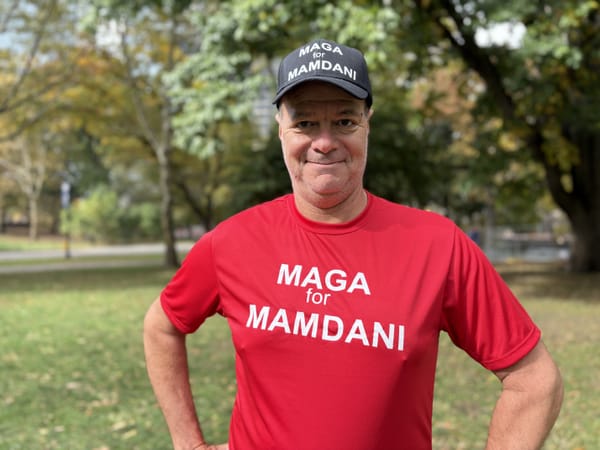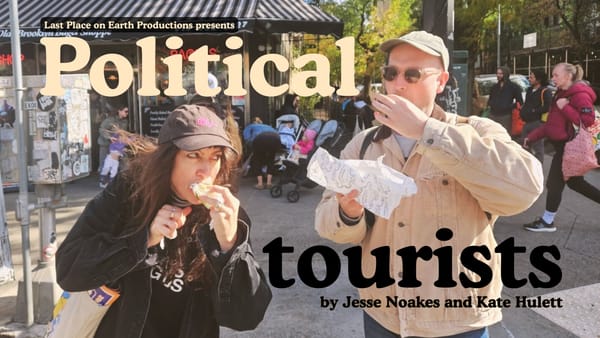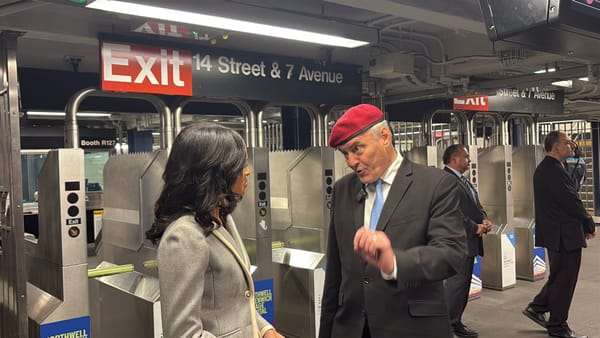Welcome to New York
I was thrown out of a US immigration courthouse by masked ICE agents. Not everyone has that privilege.
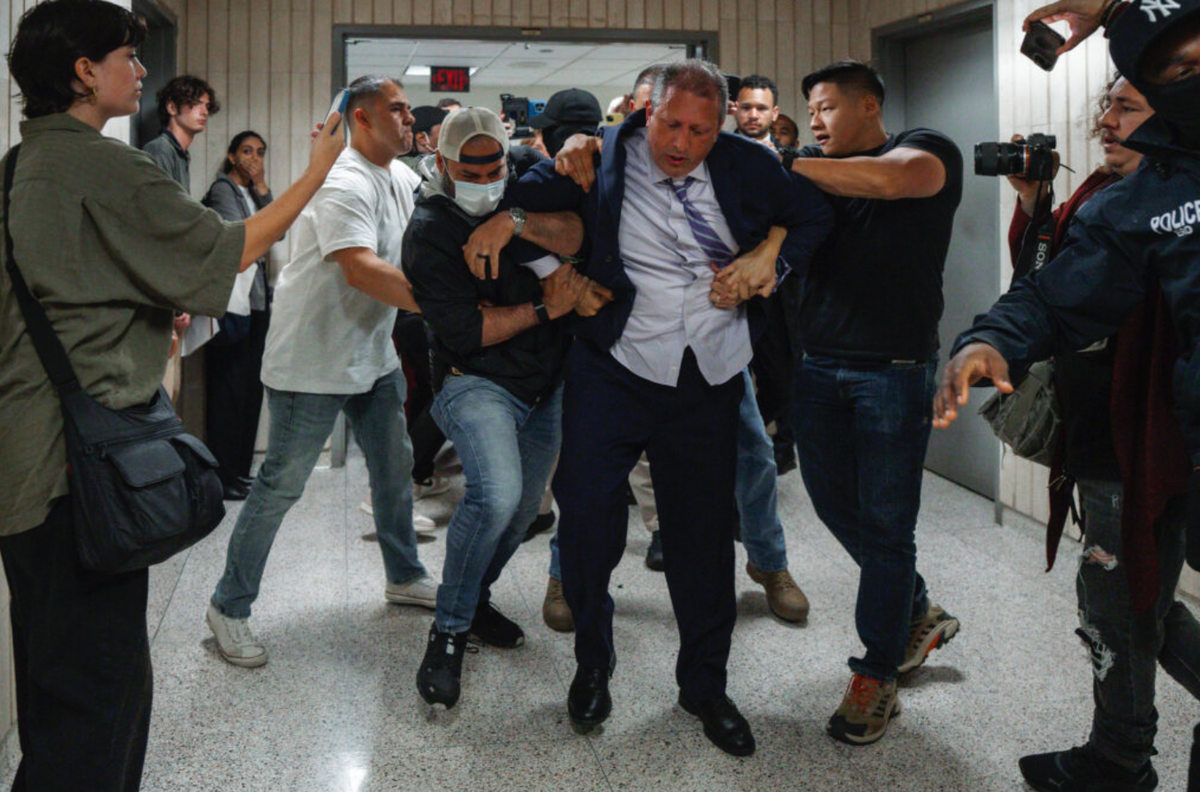
In The Ones Who Walk Away From Omelas, a 1973 fable from sci-fi and fantasy legend Ursula Le Guin, we are asked to imagine an opaque, utopian city, “bright-towered by the sea”, whose inhabitants live in “a boundless and generous contentment.”
The story begins on a festival day, in a great water meadow ringed by snow-capped mountains that “burned with white-gold fire across the miles of sunlit air” before moving through city streets ringing with music and the sound of bells. Le Guin is purposefully vague about the details, suggesting the reader apply their preferred forms of technologies, governance and sexual mores, but she is resounding about the general characteristic of the place: “joyous”.
All except for one final detail: in a dark cellar, filthy and confined, sits a child, miserable, scared and abandoned, on whose continued suffering the existence of the bright city above metaphysically - and knowingly - relies. Every so often the child’s isolation is interrupted by visitors from above, to confirm the social contract their lives are built on before closing the door onto the darkness once more.
I will not claim that New York City in 2025 is an urban fairy tale comparable to Omelas (actually named for a road sign for Salem, Oregon that Le Guin saw in a rear-view mirror). But in a federal courthouse building in midtown Manhattan, it contains a dark analogue to that story’s subterranean collateral.
Every day, hundreds of migrants queue up for court hearings in front of immigration judges inside the vast tower block at 26 Federal Plaza. Not all of them leave.
Downstairs, the bland, shabby foyer looks like a standard US government office. But what happens on Levels 12 and 14, where ICE agents prowl the corridors outside courtrooms and pounce on people as they leave, is a symbol of America in 2025.

Midtown Manhattan last week still felt like London or Paris. The white people were in family groups getting breakfast while the migrants made their coffees. We went to an Australian cafe with a Melbourne street sign on the wall. A middle-aged guy wearing quarter-zip athleisurewear was scrolling Threads for HuffPost links. It certainly didn’t look like a society on the edge of collapse yet. At least until I got out of the elevator at 26 Federal Plaza.
Right on Broadway, just above the Financial District, is a trap. Every day, migrants enter for mandated court hearings in front of an immigration judge. As a handful of photojournalists press against the walls of the narrow passageways, ICE agents loiter to hustle people seemingly at random into the bowels of a system operating outside any discernible rules.
I had heard about what was happening there, and seen the photos of families being ripped apart in front of the world’s media literally inside a federal court building. New York City Comptroller Brad Lander has spoken about getting arrested there earlier in the year, in the crush and chaos of protests about the forced abductions in the tight, bright corridors.
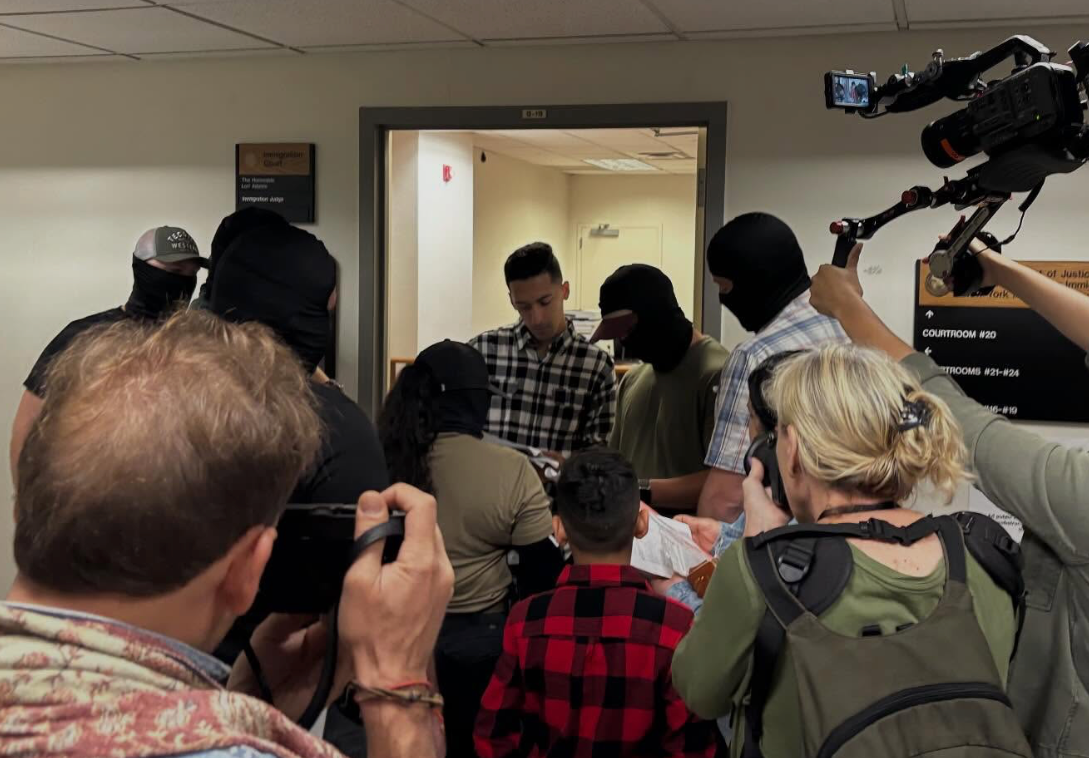
It seemed to be somewhat quieter last week. A cameraman I spoke to has been going there for the past five months to make a documentary about what’s happening in this building. He told me the operation seemed to have wound back somewhat recently, which he speculated was due to the shutdown. But he said that as recently as last Monday there were still highly traumatic forced abductions taking place upstairs.
I recognised another photographer from a news article. Level 14 seemed like its own little ecosystem, where most people know each other. Another journalist who’s been attending for months told me that one of the ICE agents has become a reliable source for him. But everyone agrees the agents are arseholes, and they certainly lived up to their reputation in my brief encounters.
“No loitering,” an agent barked at us as we walked past their little checkpoint near the lift. Two other officers followed us down the corridor. For probably the most powerful agency in the entire US government at the moment, ICE agents look remarkably sloppy. They barely seem to have a uniform - some are in casual clothes, others are wearing vests, and their insignia looks like they screenprinted it at home onto a range of cheap t-shirts from Target.
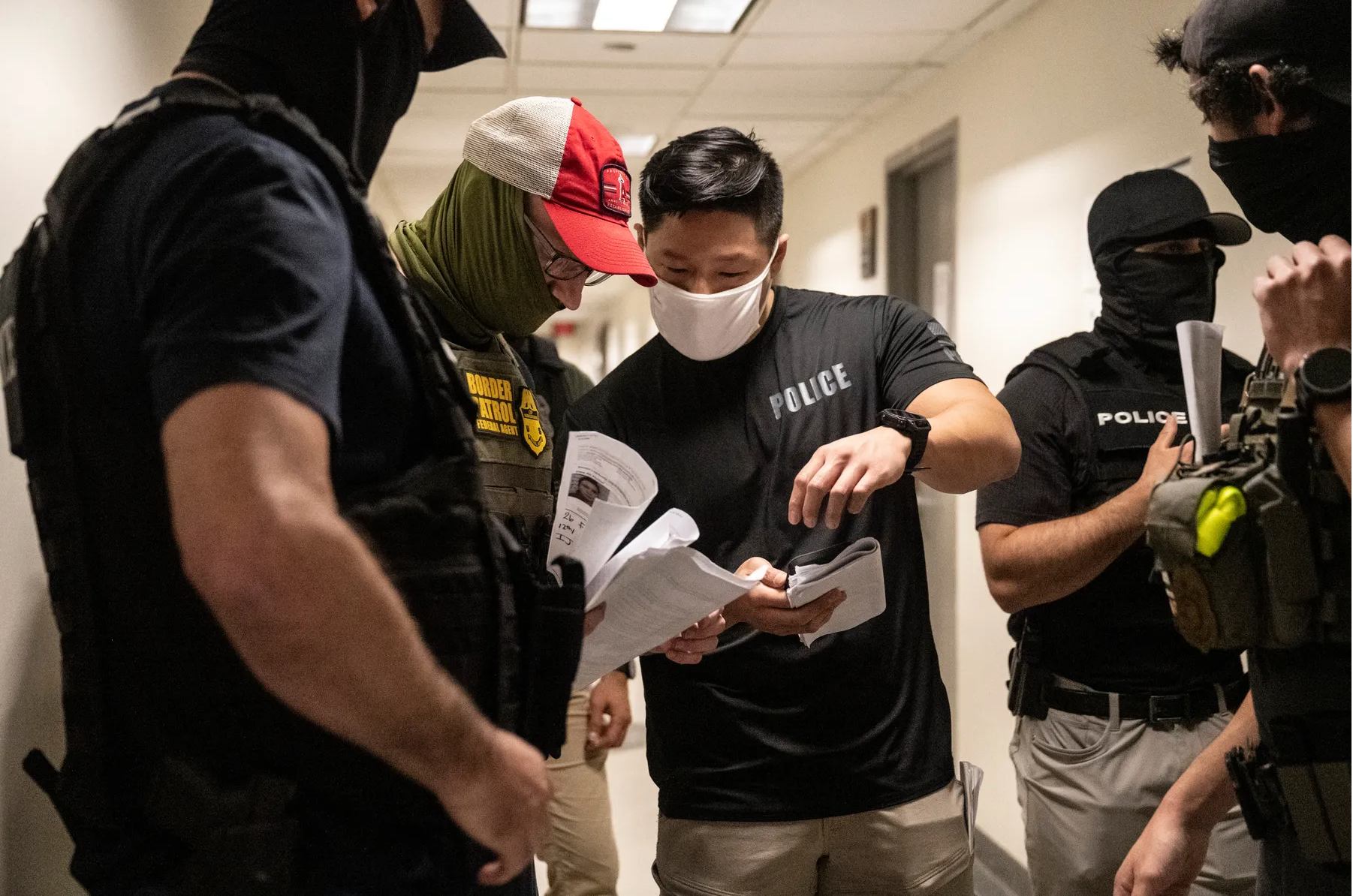
“Where are you from?” a big masked man demanded of me. “What’s that voice, I can’t understand what you’re saying to me.” Australia, I told him, which seemed to defuse him a little. “You can’t be here, you have to leave.” I asked him why - apart from producing ID and going through a scanner downstairs, no one had asked me anything until I got out of the lift on Level 14.
“This is a federal building, the rules are different.” They sure are. On 12 and 14, there are signs on every surface announcing that phones, recording devices and cameras are all banned. I went to several other floors in the building and none of those prohibitions applied. There seems to be a curious combination of oppressively shameful secrecy and in your face, on the nose openness to the brutality here. And I knew that by law this space is open to the public. But there’s no rules here. That’s really the point.
The Ones Who Walk Away From Omelas ends on a poignant note of departure: of those who have seen the truth and, unable to bear the cost, leave the city to strike out into the unknowable wilderness. The only talk of leaving New York I’ve seen so far is from people allegedly swapping a penthouse in Manhattan for one in Florida to evade Mamdani’s ‘millionaire’s tax’.
In his victory speech last Tuesday, New York’s immigrant mayor-elect vowed that “New York will remain a city of immigrants: a city built by immigrants, powered by immigrants and, as of tonight, led by an immigrant.” Mamdani had a direct message for the President enforcing the extra-judicial abductions right outside the courtrooms: “to get to any of us, you will have to get through all of us.”
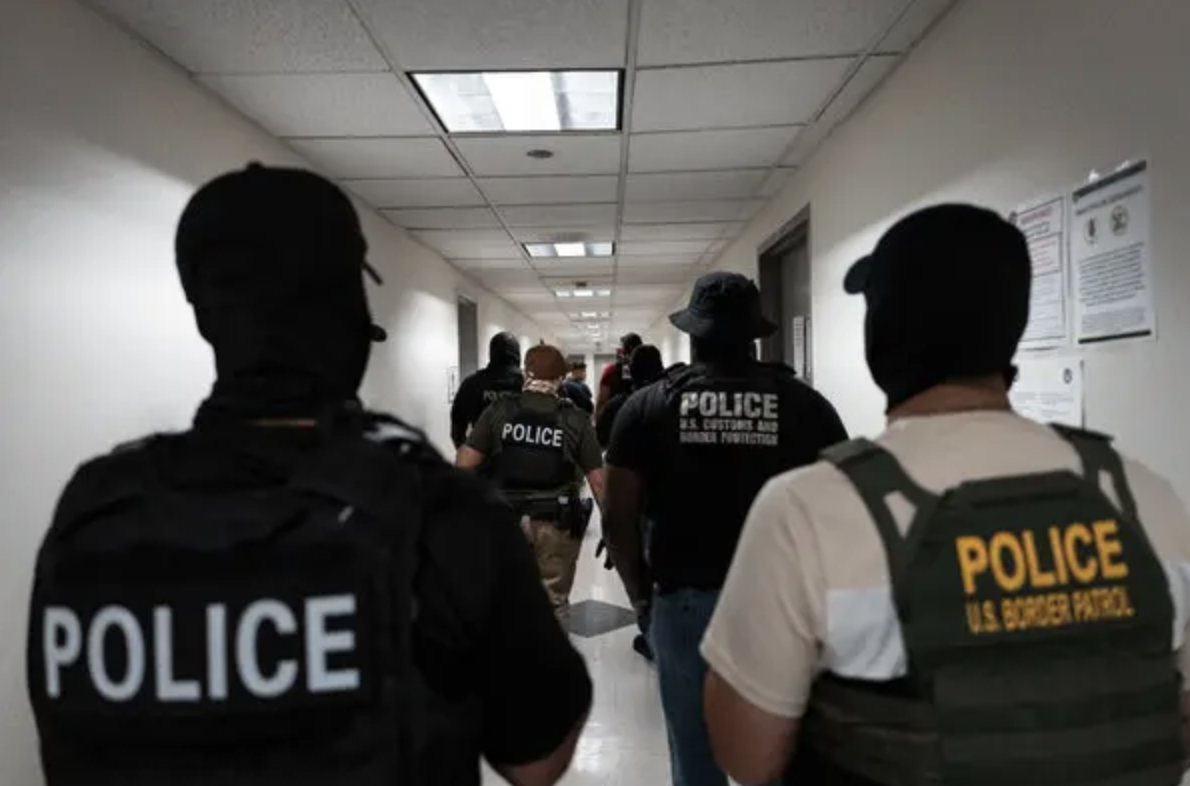
Just before we were finally hustled out of Floor 14 by ICE agents, a crying mother and children were escorted to the lift, a priest and photojournalists following, seemingly more for moral support than for media. It was unclear what had happened to them in court or where they were going now, or whether the children’s father was coming with them. That’s the thing about this building in the middle of Manhattan - no one seems to know who’s going to be detained, where they go when they’re taken, or what happens to them afterwards. Reportedly, many end up in federal detention facilities in other states, before being deported God knows where.
Meanwhile, life outside goes on much as normal. Times Square still shines unbearably bright. Central Park is still bigger than any park has a right to be. On any scale, New York is still the greatest city on Earth. But there is something deeply unsettling inside 26 Federal Plaza in Manhattan, and it stays with you a long time after you leave.
This piece was co-published with Crikey.



